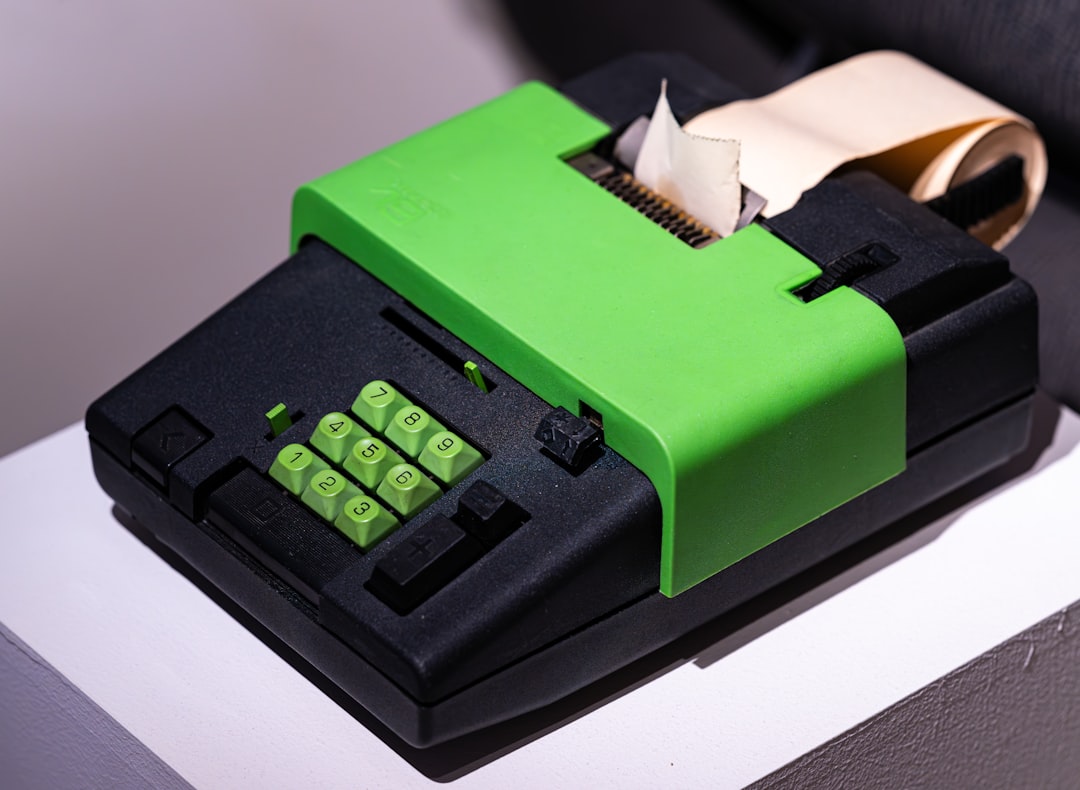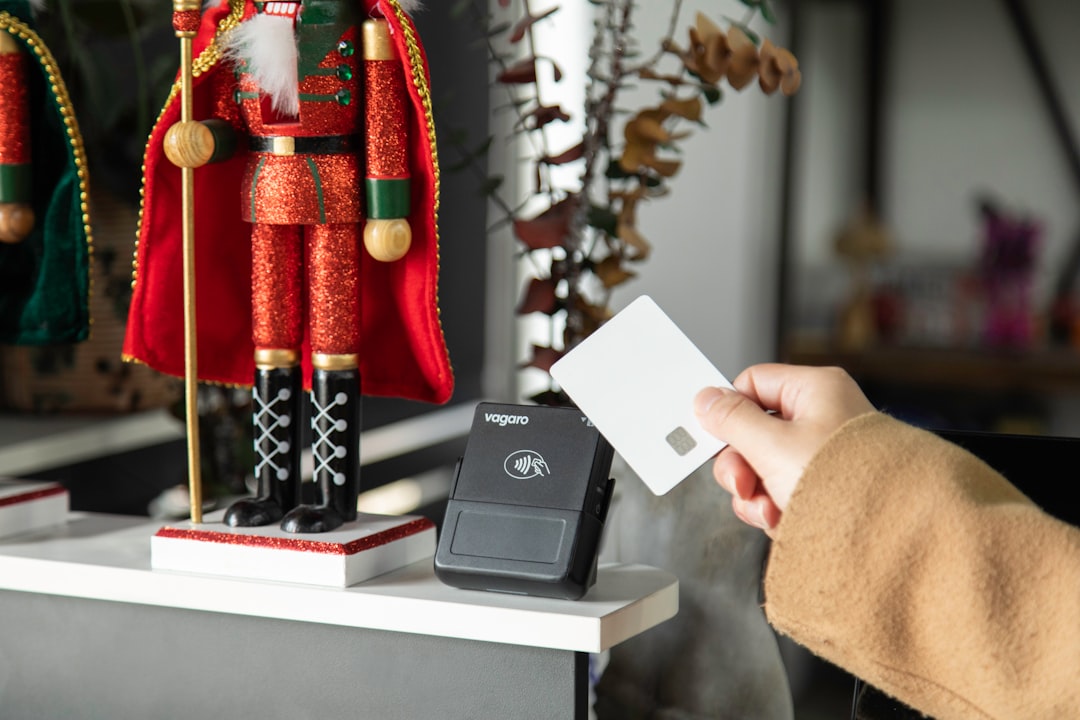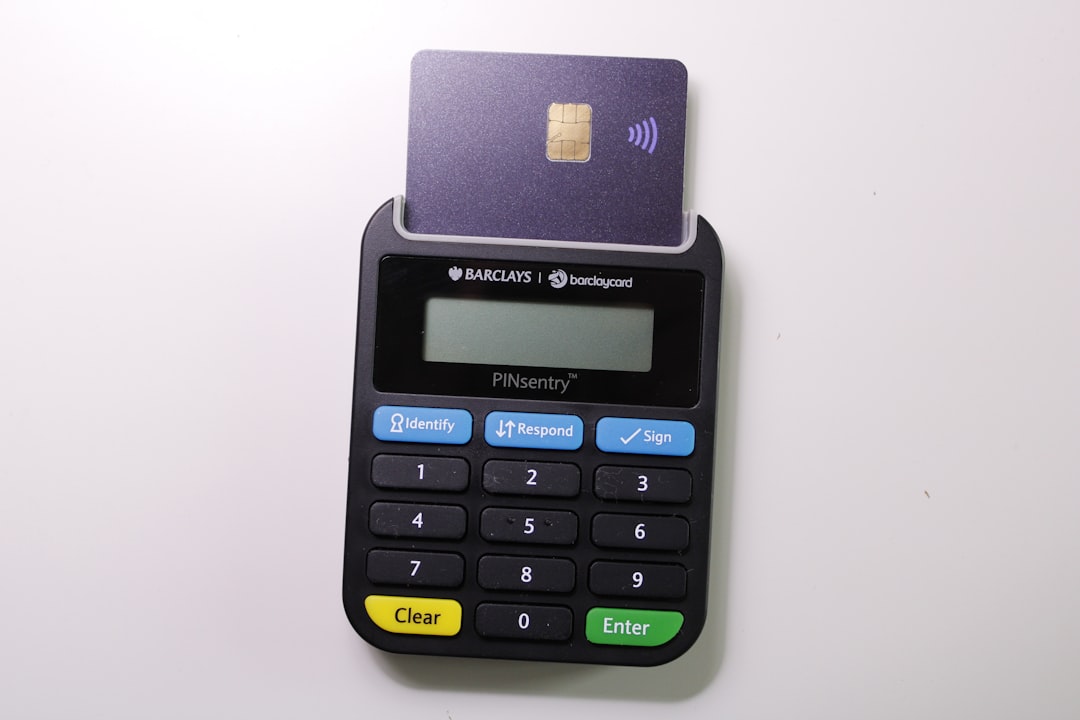

Engage prospects with a scan and streamline customer engagement with FREE QR code marketing tools by Sona – no strings attached!
Create a Free QR CodeFree consultation

No commitment

Engage prospects with a scan and streamline customer engagement with FREE QR code marketing tools by Sona – no strings attached!
Create a Free QR CodeFree consultation

No commitment
Credit card processing services are evolving rapidly as customer expectations for seamless, secure, and contactless experiences grow. Yet the shift exposes pain points, such as missing high-value opportunities when customers complete transactions across fragmented channels that do not feed into the CRM, or anonymous buyers whose engagement signals go undetected and unmeasured. This leads not only to missed revenue but also limits a business’s ability to personalize follow-up or identify promising accounts across merchant portfolios.
The move toward digital payment solutions, especially mobile payment processing and contactless payment options, demands tools that can simplify transactions while still giving merchants data, control, and integration flexibility. QR codes in marketing have emerged as an effective way to close gaps between physical and digital payment workflows, supporting real-time payments, enhanced customer journeys, and actionable analytics. By shifting away from legacy forms or terminals, businesses speed up the transaction and gain far greater transparency into who is engaging, when, and why, all without the overhead of custom apps or complex integrations. For broader context on adoption, see Deloitte’s fintech trends.
When implemented strategically, QR codes empower credit card processing service providers to transform static touchpoints into interactive, conversion-ready opportunities. Instead of generic analog encounters that induce friction and risk lost opportunities, QR payments can turn every receipt, checkout counter, or printed invoice into a launchpad for capturing buyer intent, updating account data instantly, and building stronger journey segmentation. Secure payment links, streamlined ecommerce workflows, and actionable customer data transform payment processes from a liability into a source of lasting business value, minimizing costs and paving the way for frictionless engagement each step of the way. Advanced platforms like Sona QR allow for real-time engagement tracking and direct CRM updates as soon as a payment is made, surfacing previously hidden account insights and enabling effective follow-up, cross-sell, or upsell campaigns without extra overhead. Start creating QR codes for free.

Creating truly seamless payment experiences is an ongoing challenge. Outdated methods, such as paper forms, manual entries, and static receipts, fuel slowdowns that frustrate customers, introduce errors, and often leave potential buyers untracked in your CRM. Printed invoices that require a phone call, shared terminals that break attribution, or emailed PDFs that go unanswered all create friction and data loss that compound over time.
Modern QR solutions help credit card processing services eliminate much of this friction. By digitizing formerly manual touchpoints with QR-enabled payment flows like QR code checkout, you streamline checkout while gaining visibility into which accounts are engaging and at what stage. QR codes placed on invoices, countertop displays, or delivery packaging can drive instant payment, and dynamic codes can change destinations without reprinting. Advanced platforms like Sona QR allow for real-time engagement tracking and direct CRM updates as soon as a payment is made, surfacing previously hidden account insights and enabling effective follow-up, cross-sell, or upsell campaigns without extra overhead.

For many processors and their merchants, loss of visibility into who is interacting with payment touchpoints, especially when transactions happen offline, has been a persistent challenge. Not knowing which businesses or individuals are paying in-store or via mailed invoices can bury upsell and renewal opportunities, and it can mask early churn signals that would otherwise trigger intervention.
QR codes provide a bridge between offline interactions and digital outcomes. They convert static surfaces into interactive, trackable experiences that connect the moment of payment to identity, intent, and context. When paired with payment links and secure checkouts, QR codes reduce friction and improve the speed of settlement while capturing structured data that powers smarter lifecycle management. The result is faster revenue recognition, richer analytics, and better customer experiences. Learn how to connect these dots with offline attribution.
Ultimately, QR codes let you turn every transaction, whether new or recurring, into a data-rich event. That event can be tied to a named account, a physical location, or a campaign source, which enables processors and merchants to allocate spend, prioritize outreach, and craft relevant offers with confidence.

Credit card processors and merchant services teams often struggle with inconsistent campaign execution, missed segmentation opportunities, or a lack of clear attribution between marketing and payment channels. QR technology addresses this by providing flexible code formats that map to the most common workflows in payments and customer engagement.
For this industry, not all QR types are equally valuable. Payment flows rely on secure URLs that connect to hosted checkout pages, while post-transaction engagement leans on feedback forms or loyalty enrollments. Dynamic codes, which allow you to update destinations in real time, are especially useful for invoices, rotating promotions, and seasonal campaigns. Static codes still have a place for evergreen prices or fixed menus, but they lack the agility needed for precise targeting and analytics.
Companies are increasingly using QR formats not only to facilitate payments but to tighten the feedback loop between offline activity and online data collection. A single code can trigger a secure payment, a receipt enrollment, and an opt-in flow, which compounds data quality and accelerates future conversions.

Growth in credit card processing depends on recognizing and capturing buyer intent at every possible touchpoint. Fragmented workflows and incomplete visibility into offline engagement create blind spots that suppress ROI from acquisition, retention, and expansion. QR codes offer a straightforward way to instrument those moments and convert attention into action and data.
Think broadly about where your audience interacts with invoices, payment prompts, and service experiences. Anywhere a paper artifact, a sign, or a printed label appears is an opportunity to replace a slow analog step with a fast digital action that is measurable. Adding unique QR codes to each placement lets you compare performance and adjust spend, messaging, and staffing accordingly.
By adopting QR-driven instrumentation across these moments, providers strengthen data integrity, increase conversion speed, and ensure that every touchpoint yields signals that inform retargeting, account management, and churn prevention.
Payment workflows often rely on generic experiences that miss critical signals about who paid, what they purchased, and where they engaged. QR codes provide practical, high-impact solutions that slot directly into existing operations without requiring custom apps or complex hardware.
The following use cases align with common interactions between merchants and customers. They allow both sides to complete tasks quickly while generating the data that sales, marketing, and finance teams need to operate efficiently. Each use case is designed to shorten cycles, reduce manual work, and elevate customer satisfaction.
Beyond these core use cases, many processors connect QR codes to rate updates, financing offers, or buy now pay later applications, which can be completed on mobile devices with identity verification and consent captured in one flow. For payments architecture, review Mastercard QR APIs.
A persistent pain point in payments marketing is the inability to retarget or nurture leads whose engagement is anonymous or untracked. QR codes change that equation by supplying precise intent and context at the moment of interaction. Each scan informs you about the environment and state of the buyer journey, which you can translate into differentiated follow-up.
By placing multiple unique codes across touchpoints, you naturally create behavior-based segments without requiring users to log in or fill lengthy forms. With Sona QR, these segments can be synced to your CRM and ad platforms automatically, triggering the right email sequence, SMS reminder, or sales alert at the right time. For campaign execution, see Sona’s intent-driven retargeting.
Credit card processors can also identify segments like first-time payers versus returning customers, business versus consumer, or in-store versus delivery. Mapping offers to these distinctions increases relevance and improves conversion rates across both retention and expansion campaigns.
Disconnected campaigns create confusion and lower conversion rates, particularly when payment, marketing, and service communications do not align. QR codes help credit card processing providers unify offline and online touchpoints, making it simple for customers to act and for internal teams to measure what works.
Think of QR codes as connectors that move people from static media into a dynamic, trackable experience. When placed throughout your print, in-store, event, and media campaigns, they not only reduce friction, they also make offline channels measurable. Using a centralized platform like Sona QR, you can manage all codes, monitor performance in real time, and sync data with downstream tools.
QR codes serve as the offline onramp to your digital marketing engine. They unlock a new layer of cross-channel data collection, which is essential for performance tracking and spend optimization across the payments lifecycle.
The risks of missed segmentation or wasted spend often stem from haphazard execution. A structured process ensures consistency, measurement, and momentum from the first scan to the final conversion. Use the following steps to plan your QR initiatives so they support payment speed, data capture, and revenue outcomes.
These steps are designed for growth leaders and operations teams in credit card processing services who manage both customer experiences and internal analytics. Customize the objectives, placements, and messages based on your merchants, transaction types, and seasonal patterns, and use Sona QR for centralized management and reporting.
Companies that follow this playbook report faster payment cycles, cleaner CRM data, and more effective targeting. By closing the loop between offline prompts and online outcomes, you elevate both customer experience and internal efficiency.

One of the most persistent frustrations in credit card processing is the inability to connect offline actions to revenue and customer journeys. Without clear attribution, it is hard to know which placements deserve budget, which messages resonate, and which accounts are warming up or cooling off. Worse, teams often operate with stale or incomplete data that fragments the view of the customer.
Modern QR analytics provide a transparent alternative. By capturing scan metadata and tying it to payment events, you can identify high-performing placements, segment audiences by behavior, and act on early signals quickly. Instead of guessing, you can measure the impact of each code and each campaign on billing speed, total collected, and lifetime value.
For strategy and modeling, explore Sona’s multi-touch attribution and how marketing drives pipeline with influence on pipeline. With Sona QR and Sona.com, you can capture real-world engagement and tie it to pipeline and revenue. Sona’s dashboards measure scans by placement and context, sync with your CRM in real time, and support multi-touch attribution so you can see how QR engagement contributes to conversions across channels. The outcome is a performance-oriented approach to offline media that matches the precision of digital.
Maximizing ROI with QR-driven campaigns requires good design, smart placement, and disciplined analytics. Many misses stem from generic codes that are not trackable by location, weak calls to action, or a lack of integration with systems that turn engagement into follow-up. Focus on a few practices that create a seamless experience and reliable data.
Select the tactics that fit your most common media and customer habits. For example, restaurant processors should emphasize tabletop and receipt placements with loyalty sign-ups, while B2B processors may focus on invoices and trade show collateral with embedded payment links and onboarding forms. Use these tips to improve both adoption and measurability.
Creative deployments can spark outsized results. For instance, place QR codes on recurring invoices that route to a personalized payment page and a one-click opt in for autopay. In hospitality, print codes on table tents that open a mobile checkout with suggested tips, loyalty enrollment, and a quick survey. Each scan adds data that compounds over time, turning transactions into relationships.
The long-standing pain points in credit card processing have been the same for years: missed high-value buyers, poor visibility into account engagement, and outdated customer data that slows growth. QR codes fix these issues by embedding a digital bridge at every payment touchpoint. The bridge captures intent, accelerates settlement, and enriches systems so teams can act with precision rather than guesswork.
By adopting QR codes across invoices, POS materials, delivery, events, and mailers, you not only reduce operational costs and speed up collections, you also build the data infrastructure to personalize outreach, minimize churn, and deliver consistent messaging. This shift replaces ad hoc processes with repeatable, measurable workflows that scale across merchants and channels.
QR codes have become a strategic lever for credit card processing services that want to deliver seamless, data-driven, and secure payment experiences. With advanced tools like Sona QR for code creation and tracking, and Sona.com for attribution and identity resolution, providers can tie offline engagement to revenue and orchestrate buyer journeys with clarity. As every scan adds both value and intelligence to the payment cycle, processors unlock new revenue potential and a durable competitive edge across every channel.
QR codes have revolutionized credit card processing services by transforming traditional payment methods into seamless, trackable, and engaging customer interactions. They empower businesses to not only speed up transactions but also enhance customer acquisition and loyalty through personalized, data-driven experiences. Imagine effortlessly capturing which payment touchpoints boost conversions and tailoring your strategies in real time to maximize revenue.
With Sona QR, you gain access to dynamic, trackable QR codes that can be updated instantly without the hassle of reprinting, connecting every scan directly to your sales performance. This means smarter campaigns, reduced friction in payment processing, and clear insights into customer behavior that drive growth and retention. Start for free with Sona QR today and turn every scan into a powerful driver of conversion and customer satisfaction.
Credit card processing services include mobile payment processing, contactless payments, QR code-enabled payment flows, secure payment links, and integration with e-commerce platforms and CRM systems.
QR codes link static touchpoints like invoices, receipts, or checkout counters to secure, hosted checkout pages, enabling customers to scan, pay instantly, and update transaction records in real time without manual entry.
QR codes reduce friction by enabling touch-free checkout, improve transaction speed, capture detailed customer engagement data, support real-time CRM updates, increase payment completion rates, and lower operational costs.
Credit card processing services use secure payment links, hosted checkout pages, identity verification, encrypted transactions, and compliance with legal and regulatory standards to ensure safe payments.
Choose a service that aligns with your business goals, supports seamless and secure payment workflows, offers integration with your CRM and marketing tools, provides real-time analytics, and fits your transaction types and customer touchpoints.
Costs typically include transaction fees, potential setup or monthly fees, and expenses related to integrating and maintaining payment systems, but QR-driven solutions can reduce manual processing burdens and operational costs.
Integration involves linking secure payment links or QR codes to your online checkout pages, connecting transaction data to your CRM, and using APIs such as Mastercard QR APIs for deeper payment integration.
Compliance includes adhering to payment security standards like PCI DSS, handling customer data securely, ensuring proper authorization for recurring payments, and following applicable financial regulations and data privacy laws.
Handling disputes involves tracking transaction data accurately, using detailed payment records from QR code interactions, promptly responding to chargebacks, and integrating with CRM systems to manage customer communications and resolution.
The future includes increased adoption of contactless and mobile payments, wider use of QR codes for seamless and data-rich transactions, enhanced real-time analytics, integrated customer journey management, and improved offline-to-online attribution.
Use Sona QR's trackable codes to improve customer acquisition and engagement today.
Create Your FREE Trackable QR Code in SecondsJoin results-focused teams combining Sona Platform automation with advanced Google Ads strategies to scale lead generation

Connect your existing CRM

Free Account Enrichment

No setup fees
No commitment required

Free consultation

Get a custom Google Ads roadmap for your business






Launch campaigns that generate qualified leads in 30 days or less.
